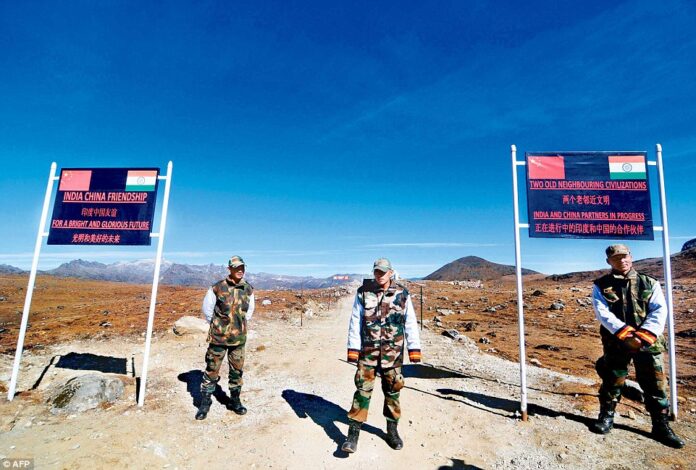Reports have surfaced regarding the construction of a new heliport by China in the strategically sensitive region of Arunachal Pradesh. This latest move is part of a broader pattern of increasing military infrastructure development by China along the Indo-China border, exacerbating tensions between the two neighboring countries.
Background of the Sino-Indian Border Dispute
The India-China border dispute has a long and complex history, rooted in differing perceptions of territorial boundaries. Arunachal Pradesh, which India considers an integral part of its territory, is claimed by China as part of its southern region, referred to as “South Tibet.” The region has witnessed numerous skirmishes and standoffs over the decades, notably the 1962 Sino-Indian War, which resulted in a significant territorial realignment and ongoing mistrust between the two nations.
In recent years, China has ramped up its military presence and infrastructure along the border, including roads, railways, and airfields. The construction of the new heliport is viewed as a strategic maneuver to enhance China’s operational capabilities in the region, raising concerns about potential military escalations.
Strategic Significance of the Heliport
The newly established heliport is located near the border with Arunachal Pradesh and is believed to be designed to support troop movements, logistical operations, and emergency medical evacuations. Analysts suggest that this facility will significantly improve China’s ability to deploy forces quickly in the event of a conflict or border skirmish.
The proximity of the heliport to the Line of Actual Control (LAC) further heightens its strategic importance. Indian defense experts warn that the facility could enable rapid troop mobilization and reinforce Chinese claims over disputed territories. This capability could potentially alter the balance of power along the border, compelling India to reassess its own military strategies and preparedness in the region.
India’s Response and Concerns
In light of the new Chinese heliport, Indian defense officials are reportedly reviewing the country’s military posture along the LAC. The Indian Army has been actively increasing its infrastructure and deployment capabilities in Arunachal Pradesh, aiming to ensure that it is adequately prepared to counter any aggressive maneuvers from China.
Indian defense experts emphasize the need for enhanced surveillance and reconnaissance capabilities to monitor Chinese activities in the area. “The establishment of a heliport is just one piece of a larger puzzle. We need to be vigilant and ready to respond to any provocations,” remarked retired Major General Harshakumar, a defense analyst.
India has also been strengthening its diplomatic efforts, engaging with other nations to build a coalition that can address security concerns in the Indo-Pacific region. The situation underscores the importance of international partnerships in ensuring regional stability amid rising Chinese assertiveness.
Broader Geopolitical Implications
The heliport’s construction is not only a bilateral issue between India and China but also has broader geopolitical implications. It reflects China’s ongoing strategy of expanding its military reach and influence across the region, particularly in the context of its Belt and Road Initiative (BRI) and its growing presence in South Asia.
For India, the new development is a reminder of the need to enhance its own military capabilities and regional partnerships. The Quad alliance—comprising India, the United States, Japan, and Australia—has emerged as a counterbalance to Chinese expansionism, and the situation along the Indo-China border could serve to galvanize further collaboration among these nations.
Conclusion
As the situation develops, the strategic landscape along the Indo-China border remains fraught with tension. The establishment of the Chinese heliport in Arunachal Pradesh highlights the need for India to adopt a proactive approach in safeguarding its territorial integrity and national security.
The ongoing border dispute continues to pose significant challenges, not only for India and China but also for regional stability in South Asia. With both nations increasing their military capabilities, the potential for miscalculations and misunderstandings remains high.
In addition, the construction of the heliport underscores the urgency for both nations to engage in dialogue and explore avenues for conflict resolution. As military tensions rise, the hope is that diplomacy can prevail, fostering an environment conducive to peace and stability in the region. The coming months will be critical in determining how both countries navigate this complex and evolving situation.




